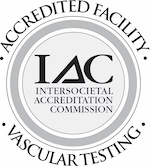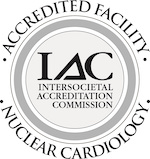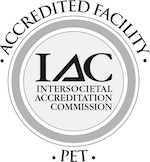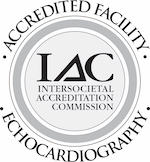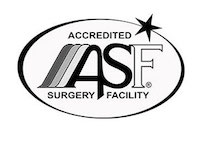Varicose Veins
Our veins have valves that keep blood flowing in the right direction–back to the heart. As we get older, our veins can become damaged and if these valves stopped working properly, blood can back up within the body and cause swelling known as varicose veins. As the veins begin to swell and twist, they become more visible under the skin. Varicose veins can be asymptomatic or a lead to symptoms including pain, skin ulcers and blood clots. Foremost, varicose veins represent an inconvenience and an aesthetic problem. Mild symptoms can be managed with lifestyle change. For some however, especially those who wish to improve the appearance of their skin or who are experiencing significant symptoms, medical and for direct intervention maybe necessary.
Causes of varicose veins
Age is the biggest predictor of varicose veins as our blood vessel walls begin to weaken and time begins to reduce the effectiveness of the valves in our veins. As the elasticity of our veins is compromised, the veins are allowed to bulge as the valves struggle to propel the blood up the channel. This combination leads to the telltale signs of varicose veins.
Some patients may also have family history of varicose veins and therefore a predisposition to develop them. In some cases, varicose veins may present an earlier age due to inherited traits. Excess weight can also increase the added pressure in the vein. A similar pressure can occur during pregnancy which also increases the chance of developing the condition.
Other causes of varicose veins include:
- Trauma from a serious blow or accidents involving the legs can increase the likelihood of varicose veins presenting.
- A sedentary lifestyle or frequently spending extended periods of time sitting can contribute. This same principle applies to travelers who maybe sitting on a train, plane or bus for extended periods of time without moving their legs.
- A habit of crossing one’s legs increases the required pressure in the veins to circulate blood back to the heart, which can contribute to weakening.
- Women are more susceptible to varicose veins than men. Risks are especially high during hormonal changes such as puberty, pregnancy and menopause. Taking hormonal birth control may also increase the risk of varicose veins.
Various lifestyle changes, such as losing weight, increasing one’s activity level and wearing compression stockings as recommended by your cardiologist, can all reduce the risk or even prevent varicose veins. There are some factors beyond their control. Anyone who already has varicose veins can reduce symptoms and their appearance by avoiding many of the potential causes of the risks mentioned above.
Common Symptoms of Varicose Veins
Varicose veins are usually very obvious and can be diagnosed with a simple medical evaluation by a qualified physician. The most common symptoms and signs of varicose veins include:
- Visible enlarged and swollen veins just under the skin
- Painful legs (this can also manifest as itching or cramping)
- Discoloration of the skin in the area of the varicose veins
- Some swelling in the leg
While varicose veins themselves are typically not dangerous, it is always worth mentioning them to your doctor to ensure that there are no co-occurring disorders. The pain and throbbing of varicose veins can also be a symptom of deeper vein clots, known as deep vein thrombosis, which are very serious or even deadly if not treated appropriately.
Diagnosis and Treatment
While a medical examination is usually sufficient to diagnose varicose veins, our vascular surgeon may also suggest a duplex ultrasound to check for blood clots in the legs by visualizing blood flow in the area. By combining Doppler and the traditional ultrasound, we can get an accurate view of the blood flow in the legs and rule out more serious conditions.
Treatment for Varicose Veins
After a thorough evaluation, your vascular specialist will offer treatment options for your particular case. Depending on the general health of the patient, as well as the extent to which the varicose veins are causing lifestyle impediments, the course of treatment may include one of several possible options.
Lifestyle Change
Virtually all patients will be advised to improve their lifestyle and specifically eat more healthily and exercise more. Exercising improves blood flow through the veins and assist with weight loss. Proper diet does the same. Your specialist will also discourage wearing tight clothes, especially around the waist which can slow blood flow back to the heart. Wearing high heels for long periods of time can also reduce blood flow, so this may be discouraged as well.
Compression Socks / Stockings
Compression stockings maybe recommended by your vascular specialist. The graduated compression from your feet up to your calves allows for more efficient blood flow and minimizes the pooling of blood in your lower extremities. It maybe tempting to purchase an over-the-counter compression stocking system, however, if you’re not fitting properly, it can actually have the opposite effect.
Sclerotherapy
Sclerotherapy is an in office procedure that involves injecting liquid into the offending vein or veins to close them off. Even though blood does not flow through that particular vein, it will be bypassed with other veins. This is typically used for smaller varicose veins and is often not appropriate for larger or more severe cases.
Laser Ablation
Endovenous laser ablation involves the threading of a specially made catheter into the vein and applying concentrated laser or RF heat into the offending vein to close off the vein. This procedure is typically performed in office with only local anesthesia and recovery is very quick. Learn more about Endovenous laser ablation
Surgery
In rare cases, for particularly severe varicose veins, surgery may be necessary to close off the vein. It is performed as an outpatient, same day procedure but recovery and return to normal activity may take up to a few weeks.

